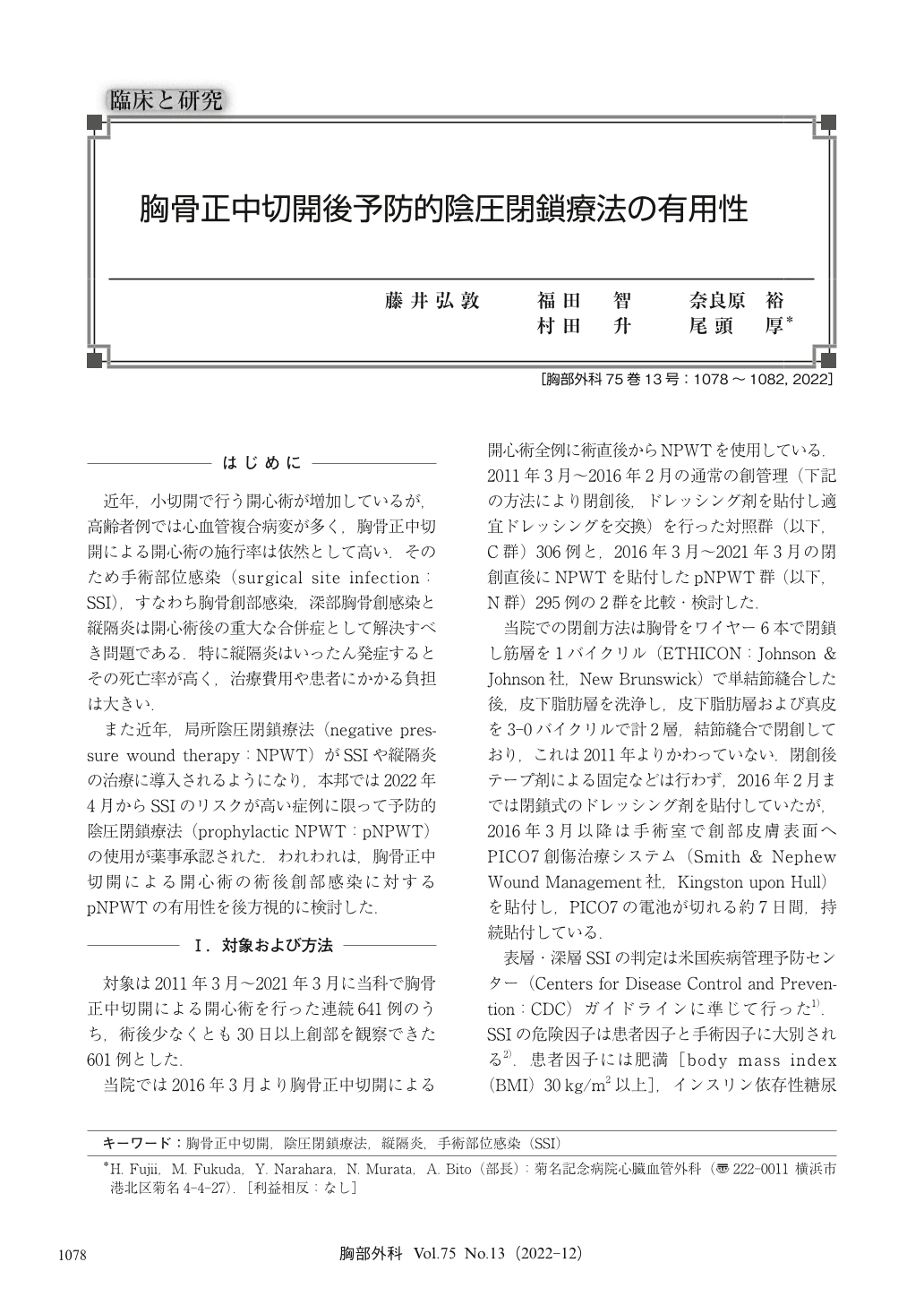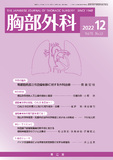Japanese
English
- 有料閲覧
- Abstract 文献概要
- 1ページ目 Look Inside
- 参考文献 Reference
- サイト内被引用 Cited by
近年,小切開で行う開心術が増加しているが,高齢者例では心血管複合病変が多く,胸骨正中切開による開心術の施行率は依然として高い.そのため手術部位感染(surgical site infection:SSI),すなわち胸骨創部感染,深部胸骨創感染と縦隔炎は開心術後の重大な合併症として解決すべき問題である.特に縦隔炎はいったん発症するとその死亡率が高く,治療費用や患者にかかる負担は大きい.
Negative pressure wound therapy (NPWT) is used primarily for tissue defects. In recent years, cardiovascular surgery via full sternotomy is increasingly performed through small incisions, but the rate of cardiovascular surgery through median sternotomy remains high in elderly patients, who frequently have complicated cardiovascular diseases. Mediastinitis, among other surgical site infections (SSIs), is a serious complication after cardiovascular surgery that must be resolved. Mediastinitis has a high mortality rate once it occurs, and cost of treatment and a negative impact on a patient are substantial. In some countries, NPWT is for the prophylaxis of mediastinitis, but only for cases with a significant risk of SSI. To avoid SSI, prophylactic NPWT is administered in all cardiovascular surgeries through median sternotomy at our hospital. Of 641 consecutive median sternotomy patients from March 2011 to March 2021, 601 cases were able to observe the wound for at least 30 days following the surgery. In the 601 cases, we found a statistically significant difference in the incidence of SSI. The results suggest that prophylactic NPWT significantly reduces SSI after cardiovascular surgery through median sternotomy.

© Nankodo Co., Ltd., 2022


